|
Mark Duplass and Natalie Morales in Language Lessons (2021) The annual Inside Out Film Festival entertains film buffs of all stripes, showcasing the best and most diverse work of interest to 2SLGBTQ+ communities. Kicking off the 2021 festival was the premiere of Natalie Morales’ feature directorial debut Language Lessons, also co-written by and starring Morales. Read the full review below!
In a world where so many different types of love exist, what tends to be portrayed on screen most frequently is romantic love. The rom-com is such a sprawling sub genre, often focused on how true love is able to conquer all obstacles and end happily. Being asked to name a rom-com generates endless enjoyable responses, and a myriad of couples whose relationships sometimes begin with friendship. As is the case with many romantic comedies, friendship love is strategically set up to reach the end goal of romance. Harry and Sally, one of the most iconic on-screen friendships, still meet the traditional rom-com fairytale fate, still enjoyably so. But rarely are platonic relationships portrayed on screen without the characters falling in love, which as Natalie Morales’ Language Lessons so powerfully indicates, is rich grounds to navigate through. Morales’ endearing feature directorial debut explores two people making a complex two-person decision of whether their friendship is worth preserving. Language Lessons is a heartfelt platonic love story about healing, grief, and the power of human connection no matter the distance. Given how the film weighs more heavily on characters than plot, the relationship between Cariño (Natalie Morales) and Adam (Mark Duplass) is completely at the forefront. Cariño is Adam’s surprise Spanish teacher; his husband Will (Desean Terry) had gifted him virtual lessons. During the first online lesson, Adam and Cariño instantly hit it off; she becomes immersed into his morning routine, the two conversing in Spanish as he chills in his pool. But when the second lesson begins in tragedy, the relationship between teacher and student unexpectedly deepens and gives new meaning to the title of this film. Lessons of love, loss, boundaries, respect, grief, isolation, and hope make room for these two characters to learn about each other. Shot entirely through computer and phone screens, the film chronicles their friendship and completely eclipses the trappings of COVID era filmmaking. Without the specificity of mentioning or alluding to the pandemic at all, the story feels evergreen in its depiction of long-term relationships where people rely on technology to see each other often. Natalie Morales and Mark Duplass take the plunge together into a realm where so much is up in the air for their characters. Not tied by family, romance, or the simple benefits of close physical proximity, the ease with which they can choose to disconnect from each other is at their fingertips. But their relationship becomes much more complex than the second it takes to close a laptop. Morales and Duplass are brilliant to watch. Full of intrigue and surprises, they make the growing friendship between Cariño and Adam evolve so effortlessly. Their chemistry is instantly endearing, which makes the second Spanish lesson and everything that follows all the more poignant and emotionally involving. They bring a wonderful conversation piece to life, and drive home the power of human connection. Naturally the structure of this film is close to the bone, existing at a time when people from all around the world use technology more than ever to cultivate relationships. So many intricacies and details about how we communicate get lost behind a screen, a limitation that becomes interesting discourse in Language Lessons. The film engages in layered conversations about what it takes to really know a person deep down. Cariño brings up a resonating point about the gaps Adam fills in about her in his head. He starts to create a narrative beneficial to the way he wants her to fit into his life. He wants to save her from her circumstances. It’s a dynamic that speaks so truthfully to how Adam feels he knows her right off the bat, how the influence of his white privilege sidesteps truthful interactions, and the unfair position this puts Cariño in. By focusing solely on the two main characters, and the way their bond develops over time, the actors have so much room to navigate the intricacies of friendship. Unlike romantic love, platonic love doesn’t have the traditional milestones to celebrate highs. Platonic relationships are full of so many potential pitfalls and ‘what if’ moments. What happens if one person says, “I love you” early on? How would such a declaration affect the dynamic? There’s an incredibly vulnerable scene when Adam tells Cariño how much he cares about her, and there’s a moment on her end when she’s uncertain of how to respond. That space of unknown feelings makes way for an interesting area to explore. Boundaries are set, the stakes are high, and there are no guarantees between the two of them. All the intricacies of being a friend to someone show how much harder it can be to navigate a platonic relationship than a romantic one. Given the computer/phone screen structure, and watching two people connect solely through technology, there’s the added layer of how easily someone can disappear from one’s life for any given period of time. Language Lessons utilizes this structure so brilliantly to tell a story. After the second Spanish lesson, Cariño and Adam decide to communicate via video messages. Without adhering to a schedule, they have time to ruminate on events and drop in on their own time. Both of them start to send messages from whichever moment inspires them to do so, which adds more texture to the story and reveals details about their daily lives outside of the lessons. As Cariño stresses in one of the more emotionally heightened scenes in the film, she has a life beyond Adam. This moment speaks to how incredibly talented Morales is both on and off the screen; she utterly inhabits this character and shares wonderful chemistry with Duplass. Together, as co-stars and co-writers, they bring so much emotion to such a tiny seed of a story. Getting to see the spontaneous interactions between Cariño and Adam goes to show how one meeting between two people can make a difference. Language Lessons is a stellar embrace of vulnerability and opening up to one another about the most intimate details. A cycle of grief and loss manifests in these two characters, and the two of them alone convey it all. There are no detailed backstories or revealing flashbacks, but rather a stream of communication where the actors say so much within a limited frame. Language Lessons is an endearing exploration of how a platonic relationship takes shape, with a sweet spot that harkens to the comfort of a good rom-com. Shining through is the message that no matter how isolated or distant people are, a loving connection is possible to find. The 2021 Inside Out Film Festival runs from May 27 to June 6. 🇨🇦
0 Comments
Mélanie Laurent in Oxygen (2021) Liz (Mélanie Laurent) wakes up in a cryogenic chamber. She’s not sure who she is, or where she is, or how long she’s been dormant, but time is of the essence. Oxygen is running out. Her source of reliable communication is the voice of M.I.L.O (Mathieu Amalric), an artificial intelligence operator programmed as her medical liaison. While uncertain of identity and place, Liz has knowledge of the chamber. She knows more or less what questions to ask, each one bringing up twists and turns about her life. In order to escape, Liz must team up with the rigid M.I.L.O and find a way to regain her memories as her oxygen levels dwindle. The idea of escape interestingly manifests in different ways as the film progresses. It’s not only this chamber keeping her confined, but also the illusions within it, causing her to question what is real and what is conceptual. The high-tech visuals she sees above her are a filter for something far more infinite. Directed by Alexandre Aja and written by Christie LeBlanc, Oxygen is a tense claustrophobic thriller that explores the manipulation of truth and time. The story becomes increasingly like a philosophical drama that ponders the meaning of identity and existence. Leading the journey is an incredible performance by Mélanie Laurent, who conveys a rollercoaster of emotions from one minute to the next.
The winning combination of Laurent’s work and a screenplay of interesting ideas to ruminate on makes Oxygen a mostly compelling experience. The film benefits immensely from not being ten steps ahead of its protagonist. Known technically as “bioform patient Omicron 267,” Liz’s true identity is revealed as she’s discovering it. The film teases clues along the way through frequent use of flashbacks. A peek inside Liz’s fragmented memories introduces her said-to-be husband Léo (Malik Zidi). Hazy scenes of him playing the piano at their home, badly injured on a stretcher in a hospital, and alongside her as she works in a lab are the results of Liz’s fogging memory. Her confinement in the chamber is also juxtaposed with rats in a maze, and rats being experimented on in a lab. These visions become so visceral that Liz is convinced there are rats in the chamber with her. Her reality is blurred, and there are some who want to keep it that way. M.I.L.O isn’t the only source of communication at Liz’s fingertips. Scrambling through limited options as her oxygen levels continue to drop, she instructs M.I.L.O to connect her with a police station. What begins as an ordinary call unravels with Captain Moreau (Eric Herson-Macarel), plus possibly others listening in, gaslighting Liz into thinking that her mind is playing tricks on her, and that Léo doesn’t exist. Oxygen resonates as a personal tale of survival above all. When the general panic and risk of talking to the wrong person sets in, Liz tunes out the noise. She focuses inward and tries to piece together reality from figments of her imagination. Apart from the dreamy flashbacks and some images/videos conjured by M.I.L.O, there is no depiction of a world outside of this chamber. Alexandre Aja makes a clever choice to stay with Liz in one location, creating a claustrophobic atmosphere where any indication of impending danger is felt so strongly. Whether it’s the sound of a sudden warning signal or a crucial request denied in M.I.L.O’s operatic voice, it’s easy to feel the desperation and severe uncertainty that these moments create. The time-pressured environment, coupled with great sound design and visuals, makes for intense moments on-screen where Liz is seconds away from death. The solid voice acting also helps bring this pressurized environment to life. The decision to set most of the story inside this chamber works in a myriad of ways, the most interesting being that the chamber itself is filtered. The digitally conjured image Liz faces is put in place so as not to reveal what’s on the outside of this sleep pod. She’s fighting for her life in a manipulated setting, worsened by the ongoing string of calls with Captain Moreau. Only until the truth starts to come out, via a phone call with a mysterious woman, does Liz discover her real surroundings. At its core, Oxygen engages in the resilience of inner strength and escaping the trappings that can manifest in one’s mind. Liz carries the emotional resonance of the story, and given how much of this scenario rests on one character, a lot of responsibility falls onto the central performance to convey her journey. Mélanie Laurent goes on a rollercoaster of emotions as she races against time for a chance at survival. In a stellar collaboration with Alexandre Aja, Laurent makes a minimal setting feel incredibly cinematic. All the simultaneous fear, confusion, desperation, elation, and determination are conveyed in equal measure. As well, she excels at the physicality of this character and raises the stakes, particularly with her survival instincts in the second half of the film. Even when the story becomes a little too caught up in twisting and turning, Laurent brings a compelling truthfulness to the role of Liz. The idea that she has all the answers she needs inside of her, she just needs to figure out how to regain her memory, is an interesting dynamic to play. Oxygen works best when under the spell of piecing together a mysterious identity. Where the film loses steam is the final act. The story leans into predictability and falls into the trap of revealing too much in one breath, which undercuts the genuinely interesting ideas at play. Pondering the meaning of identity and existence brings a universality to Oxygen. The story follows a high-concept scenario, but for all the moments of dramatic tension, the most resonating part of this film is an incredibly quiet one. It’s a pensive reflection on the life Liz knows by heart, and the loss she feels from being on the outside looking in. What the film doesn’t lose is Mélanie Laurent’s all-consuming commitment to her character and setting. Oxygen makes space for Liz’s internal compass to lead this journey and find new ways to define herself in an environment where her identity is under wraps. While the story is centered in a claustrophobic framework, Oxygen creates a little world of possibilities that sees Liz defy the odds and control the narrative. Kaniehtiio Horn in Ghost BFF Now more than ever, mental health is important to prioritize and discuss openly. Everyone has a different experience, and sometimes it can feel overwhelming to reach out for help. Some of the most comforting words to hear are that you are not alone. The arts are important as a reflection of reality you can draw on to better understand your emotions and to know that others might feel a similar way. One of the greatest on-screen portrayals of mental health is Ghost BFF, a dark comedy web series that follows two best friends (one alive, one dead) as they struggle to find themselves and right past wrongs following a suicide. Amy (played by Vanessa Matsui) has developed anxiety after the loss of her best friend Tara (played by Kaniehtiio Horn). Suddenly, Tara returns from the dead as a ghost with unfinished business. Tara’s presence brings Amy to question who she is and where her life is headed. Best friends literally forever. I completely fell in love with Ghost BFF. As someone who can relate to topics discussed in the series, I find myself often going back to rewatch episodes. There’s a comforting openness to it that draws me in, and makes me feel less alone. This wonderful women-led series shines a light on mental health and tackles heavy subject matter within a comedic framework, while remaining totally grounded. Topics such as depression, anxiety, suicide, treatment, abortion, and mindfulness are addressed in a way that feels accessible and empathetic. As well, the series is a wonderful example of diverse and inclusive representation in Canadian entertainment both in front of and behind the camera. Ghost BFF is directed by Lindsay MacKay (Running with Violet) and produced by Katie Nolan and Lindsay Tapscott of Babe Nation (The Rest of Us, upcoming feature Alice, Darling). The series stars creator Vanessa Matsui (Grand Army, The Handmaid's Tale, Shadowhunters) and Kaniehtiio Horn (Letterkenny, Barkskins, Sugar Daddy). Both are nominated for Best Lead Performance in a Web Program or Series at the upcoming Canadian Screen Awards (CSAs). The series has four total acting nominations, including two for co-stars Jean Yoon (Kim’s Convenience) and Angela Asher (18 to Life, Hard Rock Medical). I had the opportunity to chat with Kaniehtiio Horn, who gives an incredibly funny and grounded performance as Tara. Kaniehtiio discussed what drew her to the series and working alongside close friend Vanessa. She also talks about the importance of prioritizing mental health, inclusive and accurate representation in the industry, her upcoming projects, and more. Check out my interview with Kaniehtiio below, and read for my interview with Vanessa here! Nadia: Kaniehtiio, thank you for taking the time to chat with me. I want to start by saying I fell in love with Ghost BFF. It’s an incredible blend of comedy and drama that tackles tough issues in a fascinating way. Congratulations on the series, and on your Canadian Screen Award nomination. What does this nomination mean to you? Kaniehtiio: I got to see the evolution of the project over nine years. I’ve known Vanessa (Matsui) since Montreal, fifteen to sixteen years ago...we’ve known each other since then. I remember her sending out emails and talking about this project that she was creating, and I was always cheering her on and hoping she got it made. I’ve watched her uphill battle to get it made, and then I got a chance to audition to become her on-screen BFF. So just to see the evolution of it and end up being a part of it is such an honour. It’s been inspirational to watch her succeed with this and all of the women involved are women my age. It’s all kinda good all over the place. Nadia: Tara is such an interesting character and you play her so brilliantly, and with great comedic timing. I loved watching the journey that she goes on throughout the series. Could you talk about how you found Tara’s voice and what drew you to the role? Kaniehtiio: First what drew me to the project was Vanessa, and knowing her. She’s hilarious. Then I think my biggest concern and biggest challenge was, first of all when you’re telling someone, “I’m in this comedy about suicide, it’s like, what?” I wanted to make sure that she was grounded and relatable, but still funny and making people laugh. I think that it was all in the writing anyway. It wasn’t that hard for me to get to that place. Working alongside Vanessa and finding those moments of realness made it easier. I didn’t feel like I was alone in this whole process of trying to keep this grounded, and something that isn’t making fun of very intense subject matter. And it’s fun to play supernatural beings. It’s kind of in my wheelhouse now (laughing). I played a witch. I played a ghost. I just played a deer lady. So it felt like a good fit. Nadia: One of the elements I love about the series is that there are great roles for women and a strong portrayal of friendship at the center. There’s been such a seismic change in the film and television industry, particularly in the last few years with the movements that have emerged. Ghost BFF is a wonderful women-led project, and a great example of diverse and inclusive representation in Canadian entertainment. Could you talk about the importance of representation for women of colour in this industry and how you think things are progressing with accurate portrayals in Canadian content? Kaniehtiio: Yes, I feel like I never know if it’s a short career or a long career...I’ve been doing this professionally for sixteen years, and it’s not the same industry as it was when I first entered the industry. Not that it’s like, “Oh wow, everything’s just changed for the better.” It’s slowly changed, and it’s still got a lot of ways to go. Vanessa had to create this [series] on her own, so that she could get cast as a lead because she wasn’t getting cast as a lead, because she’s a woman of colour. We’re being fed and told all of these same old stories, over and over again. We weren’t seeing ourselves, I wasn't seeing myself, being reflected back to us in the content that we consumed on Canadian television. I think there are more initiatives to get diverse stories told, especially in the past year. As an Indigenous woman I’ve gotten to play a few more leads, and people believe that I’m Indigenous now. In the beginning, it was because I’m light-skinned and light-haired, I was told that I wasn’t Indigenous looking enough by the industry. Because I wasn’t dark-skinned, with brown eyes, with long dark hair…these notions that the industry had of these boxes that we were placed in. Little by little, these boxes are expanding. It’s because of people like Vanessa who are breaking down these walls and creating projects. I think there’s definitely a change, and definitely a lot further we can go. I’m part of this MADE | NOUS Seek More Campaign to recommend and seek more diverse voices when consuming content on TV, film, and web series. Even in social media and the people that you follow, try to expand the voices that you are listening to. Kaniehtiio Horn and Vanessa Matsui in Ghost BFF Nadia: The series also shines an important light on mental health in a way that feels so accessible, hopeful, and empathetic. I love that each episode gives the characters a platform to express themselves, in any way that might be, and talks about issues without shame or judgment. Could you talk about the importance of prioritizing mental health, and what you hope this series contributes to the conversation?
Kaniehtiio: For me, even just being a part of the show, not even watching it but just having a chance to be a part of this project, made me a lot more confident to acknowledge my mental health issues. I hope that people who watch it don’t feel so alone, and feel it’s okay to talk about them. When I was in my mid to late-20s, I was convinced that by the time I’m 35, I would probably be committed once or twice by then, just because I thought I was nuts. Then being on a show like this and seeing, “Oh I’m not nuts, I just have some issues that I might need to talk to somebody about” made me feel stronger. I hope that people who watch this feel the same way and feel like they can reach out. I started going to therapy and realized, “Oh I can talk about this with somebody”. I’ve been going to therapy for maybe a year now and...I like love it (laughing). I like talking about my issues and then realizing at the end of the session, “Oh so I’m not nuts”. I understand where these things are coming from and I feel that knowledge is power. I feel more powerful now, and so I hope that any young person or older person, anybody who watches this, seeks some help if they need to. Or talk to somebody...look online and find the resources that are out there, because there are resources. Nadia: I really wish I had found this series sooner, it’s very special and I love that it makes you feel, you’re not alone. Switching gears a little bit, I saw Wendy Morgan’s Sugar Daddy at this year’s Canadian Film Festival, which I loved. Another fantastic project that you were a part of. What are you working on next? Kaniehtiio: I’m going back to Letterkenny, and I just guest starred on a show in the States, it’s called Reservation Dogs. I’m also working on turning my podcast [Coffee With My Ma] into an animated series. What else am I working on? I had a baby so, I’m working on raising my son (laughing). I’m also trying to create my own content. I started with baby steps, the way that Vanessa started with Ghost BFF, I started with making my podcast and doing it all on my own. Yeah, I want to do this animated series so that’s where my focus is at. Nadia: That all sounds wonderful, and I look forward to everything that you do next. In the meantime I will be rewatching Ghost BFF. It’s just beautiful, an important conversation told in such an interesting way. In the spirit of the series, I wanted to end by asking what’s a mindfulness practice that you find most helpful in your life, at this moment in time? Kaniehtiio: At this moment in time, I think without getting lost in being a parent, in being a mother, I think focusing on my son keeps me grounded. Keeps my focus on the things that are important, and not getting caught up in everything else like this industry. And just breathing, sometimes just taking a few breaths, if that makes sense. Watch Seasons 1 and 2 of Ghost BFF here! 👻💕 Click here for a list of resources on mental health and to watch Let's Talk About Our Feels, a short educational video series where the Ghost BFF team talk about women's health in relation to mindfulness practices. Click here to read more about the MADE | NOUS Seek More Campaign. Check out Kaniehtiio’s podcast Coffee With My Ma here! The Canadian Screen Awards will be streaming live on academy.ca from May 17-20. [Interview has been edited for clarity and length] Vanessa Matsui in Ghost BFF Now more than ever, mental health is important to prioritize and discuss openly. Everyone has a different experience, and sometimes it can feel overwhelming to reach out for help. Some of the most comforting words to hear are that you are not alone. The arts are important as a reflection of reality you can draw on to better understand your emotions and to know that others might feel a similar way. One of the greatest on-screen portrayals of mental health is Ghost BFF, a dark comedy web series that follows two best friends (one alive, one dead) as they struggle to find themselves and right past wrongs following a suicide. Amy (played by Vanessa Matsui) has developed anxiety after the loss of her best friend Tara (played by Kaniehtiio Horn). Suddenly, Tara returns from the dead as a ghost with unfinished business. Tara’s presence brings Amy to question who she is and where her life is headed. Best friends literally forever. I completely fell in love with Ghost BFF. As someone who can relate to topics discussed in the series, I find myself often going back to rewatch episodes. There’s a comforting openness to it that draws me in, and makes me feel less alone. This wonderful women-led series shines a light on mental health and tackles heavy subject matter within a comedic framework, while remaining totally grounded. Topics such as depression, anxiety, suicide, treatment, abortion, and mindfulness are addressed in a way that feels accessible and empathetic. As well, the series is a wonderful example of diverse and inclusive representation in Canadian entertainment both in front of and behind the camera. Ghost BFF is directed by Lindsay MacKay (Running with Violet) and produced by Katie Nolan and Lindsay Tapscott of Babe Nation (The Rest of Us, upcoming feature Alice, Darling). The series stars creator Vanessa Matsui (Grand Army, The Handmaid's Tale, Shadowhunters) and Kaniehtiio Horn (Letterkenny, Barkskins, Sugar Daddy). Both are nominated for Best Lead Performance in a Web Program or Series at the upcoming Canadian Screen Awards (CSAs). The series has four total acting nominations, including two for co-stars Jean Yoon (Kim’s Convenience) and Angela Asher (18 to Life, Hard Rock Medical). I had the opportunity to chat with Vanessa Matsui, who does fantastic work bringing this series to life. Vanessa discussed the inception of creating and writing Ghost BFF, and how the series tackles heavy subjects. She also talks about the importance of prioritizing mental health, inclusive representation in the industry, her upcoming directorial feature debut, and more. Check out my interview with Vanessa below, and read for my interview with Kaniehtiio here! Nadia: Thank you for taking the time to chat with me. Thank you for creating this series. It’s funny, intelligent, unlike anything I’ve seen, and tackles tough issues in an interesting way. The series has four acting nominations at this year’s Canadian Screen Awards, including one for your performance as Amy. How does it feel to be nominated in this category for this role? Vanessa: It feels great! I’m really proud of this show, not only the work that I did...I think it means so much that these four women were nominated for acting. I love actresses. My best friends are actors and actresses. It’s always been my dream to create really great roles for us, so I’m beyond thrilled. It means a lot to be recognized by your peers. Nadia: Your performance is wonderful. I love how the series looks at Amy’s day-to-day life, and how her grief and anxiety manifest in different ways. For example, Amy forgetting plans from time to time, which made me think about how depression and anxiety can affect one’s memory. She’s such a resonating character. Could you talk about how you found Amy’s voice and how that character came about? Vanessa: I mean, Amy, I knew I was going to be playing her. She came quite naturally to me. She was actually the easiest character to write, just because even though it’s not me, I obviously know my own voice (laughing). She’s a little based on my own personal experience with my friends who have suffered from depression, and some of which are suicide survivors. Amy came quite naturally. Especially now that all of us are, fingers crossed, knock on wood, coming out of this period of COVID. I think a lot of people can probably relate to issues with mental health and may be suffering from depression in a way they haven’t before. I’ll even hear people say, COVID brain, when they forget something. That’s a part of when you’re suffering. There are small things that your brain can’t process because it’s processing all these other things, and it’s kind of in survival mode instead of thrive mode. Nadia: The series shines a light on mental health in a way that feels accessible, empathetic, and relatable to watch. It’s important for people to feel they can talk about topics like depression, anxiety, and suicide without shame or judgment. Could you talk about the importance of prioritizing mental health and what inspired you to create a series where mental health is at the forefront? Vanessa: The inception of the idea came about when I was staying with one of my best friends. She was suicidal, and she's thriving now. To remind people suicide really is a permanent solution to a temporary problem, and I’ve watched people come through the other side. It’s so inspiring and I’m so happy. The original inspiration came about from that time being with her, and at the same time, I had another friend who died from suicide. This was probably eight or nine years ago now. I was looking around…there’s a lot of young women suffering and nobody is talking about this. So...I had the idea to create a comedy about it, but I am being respectful because I think that comedy is a really wonderful bridge when you’re talking about heavy subjects. Especially a topic like suicide which is so heavy. My background is in improv, but also, comedy is a great tool to talk about difficult things. Also, when I was staying with my friend, all she wanted to do was watch The Mindy Project. I was like, "Yes! Exactly (laughing)!" You want to watch something that’s going to make you laugh. That was ultimately what I wanted to do. I wanted people to watch the show, and if you happen to be suffering or know somebody who is suffering, the show will leave you feeling a little less alone and hopefully make you laugh. Kaniehtiio Horn and Vanessa Matsui in Ghost BFF Nadia: One of the elements I love about the series is there are great discussions and great roles for women at the center of it. There’s been a seismic change in the film and television industry, particularly in the last three to four years with the movements that have emerged. Ghost BFF is a great example of representation in Canadian entertainment that is diverse and inclusive. Could you talk about the importance of accurate representation for women of colour in this industry, and changes you’ve noticed in Canadian content over the years?
Vanessa: For sure, part of why I wanted to make this show was because nobody was casting me. I was an actor before I was a writer, and I just got sick of it. Nobody was seeing me in a leading role, and I thought that the only way the industry would ever see me as a lead is if I just made it myself and put myself in that part. I’ve known Kaniehtiio (Horn) for a long time, we go back to Montreal days, and she’s such a muse and inspiration. It felt like a very perfect, natural fit to cast her that way. Also sometimes, although we’re both mixed race, the show isn’t about being mixed race. We are women living in Toronto, and these are the things that happen. We’re also just normal people (laughing). And the other part of your question, women in the industry and how that has changed, part of what makes me proud about these four nominations is it’s four women nominated for one show. That’s huge! I don’t know if that’s ever happened before. Representation is so important, and female representation is so important, and I’ve noticed a seismic shift in the industry. I could tell you stories from what things were like in my early 20s, and what they are like now. One of the biggest shifts that I’ve seen, that has been actionable and positive, is this new position on set that’s been created called an intimacy coordinator. My first time working with an intimacy coordinator was on a show called Grand Army for Netflix, and I was like, “This is great”. It’s almost like, you know how we have stunt coordinators when you do a stunt, so it’s a specific person who’s been trained to help the director with a stunt scene so that nobody gets hurt. An intimacy coordinator does the same thing but for sex and nudity. I feel like so many bad situations that either I've been apart of on set, or that I've witnessed, would've just been eliminated because of this new position. So I think if anything that has come out of the Me Too movement, that is one of the most positive changes that I’ve seen. Nadia: Absolutely. It’s important for women to feel they have a voice in this industry, and can speak up and speak out, and talk about their experiences. Vanessa: Exactly. I mean I’ve always been very confident, even when I was young, I have no problem sticking up for myself. I would be screaming, asking people to stop, and nobody listened. Nobody cared. It was like I was nothing. It’s crazy how much things have changed, and I’m so glad for all these young women coming up in the industry now. It’s a very different place and I hope that continues. Nadia: Speaking of more women in the industry, part of that is seeing more women behind the camera as well. I understand you’re about to direct your first feature film, Midnight at The Paradise. Vanessa: Yeah! I’m slated to direct my first feature, I’m so excited. I was originally approached to be an actor in it, and the writer and I, he was also a really big fan of Ghost BFF. We found out he was also a really big fan of some of my earlier work with The Bitter End, which is my old improv group. He then saw some of my short films and said, “I actually think you’re the perfect person to direct this.” As first I was like, “No I’m not ready to do that” when I spoke with his executive producer, Paul Barkin. They really empowered me and I’m really excited about it. I do feel in this interesting way that could be a really great step in my career, and I’m excited. I’m starting to put the team together. [Liane Balaban] is one of my best friends and it’s so awesome to be able to direct her. We’ve collaborated many times in the past so it won’t be that new, but in this big of a capacity, it’ll be something challenging and exciting. Nadia: I look forward to everything you’re doing next. In the meantime I will rewatch Ghost BFF. I really found it very special and comforting. I wanted to end by asking, is there any plan to revisit this story and these characters with another season? Vanessa: There’s no current plan. My dream would be to somehow translate this to television, and get to make the TV version of what Ghost BFF is. That would be my dream. Watch Seasons 1 and 2 of Ghost BFF here! 👻💕 Click here for a list of resources on mental health and to watch Let's Talk About Our Feels, a short educational video series where the Ghost BFF team talk about women's health in relation to mindfulness practices. The Canadian Screen Awards will be streaming live on academy.ca from May 17-20. [Interview has been edited for clarity and length] Macey Chipping in Mystic (2021) The fictional town of Kauri Point is home to a tight-knit community of people. Shot on location in New Zealand, this small town has a tranquil way of life and a strong sense of togetherness set against a beautiful landscape. But there is more to Kauri Point than meets the eye, and in a town where everyone knows everyone, news travels fast. There’s something incessantly appealing about stories set in small towns. When done well, the intimacy of getting to know a lot of characters and spending time in a place that becomes familiar can become a comfort. As well, when everyone knows each other on a first name basis, the potentiality for secrets to reverberate is high. In HBO’s prestige crime drama Mare of Easttown, the consequences of crime in a small town have a devastating ripple effect on the residents. Where the show excels is in getting to know multiple characters and all the hidden drama behind them, starting with Kate Winslet’s Mare as her whole world falls out from beneath her. Beyond this and the many crime detective shows that utilize a similar setting, fueling the appeal of small town stories is how they bend to various genres and scenarios. Canadian hit show Schitt’s Creek sees a rich family suddenly lose everything, and with no other option, they move into a small town in the middle of nowhere. Part of the hilarity (and sincerity) is watching the Rose family interact with the residents like fish out of water, and then form close bonds as a result of getting to know them. Both shows utilize small communities well, and there’s room for another to watch in the family friendly series Mystic. Mystic is based on bestselling author Stacy Gregg’s Pony Club Secrets book series and executive produced by Brian Bird, co-creator of the popular Canadian-American drama series When Calls the Heart. Mystic incorporates multiple genres and speaks to many meaningful themes, from environmentalism to friendship. At the core is a young girl on a spiritual journey of self-discovery. When 14-year-old British girl Issie Brown (Macey Chipping) moves to her mother’s remote hometown in New Zealand following the death of her father, she feels out of place and missing her friends from London. She begrudgingly finds herself in Kauri Point, which appears to be an ordinary community where horse riding is the popular activity. Living with her mom and activist grandmother, Issie befriends members of a local youth equestrian club, and things get strange. With the appearance of Mystic, a spirit horse only Issie can see, she soon uncovers secrets about a mysterious group of horses connected to environmental turmoil. An industrial development threatens to destroy their community and landscape. Issie, along with her (real) horse Blaze, and the club must find a way to save Kauri Point from disaster. Issie is a wonderful protagonist for the series as she fights for the truth at all costs. When faced with a challenge, whether it be friendship drama, trouble riding a horse, or threats from a multi-billion dollar company, she maintains her stance and moves with the intention to learn. The move to Kauri Point has put a strain on Issie’s relationship with her mom Amanda (Laura Patch), as leaving London feels like leaving behind memories of her late father. Issie has a tendency to go rogue, while her mom has a steady rulebook approach. The two naturally butt heads, and with Issie’s grandmother Mitch (Cathy Downes) in the picture, 3 generations of women in one household brings a lot of texture to the story. Their often quick-witted conversations create some charming and humorous moments among the more sprawling themes like environmental concerns and spiritual bonding. Macey Chipping is up to the task and does a wonderful job portraying her character’s strong-willed personality. Given how much of the story hinges on discovering truths and unmasking corporate greed, Issie is a great character to go on this adventure with as she pushes for transparency. Chipping also shows a wonderful balance of Issie feeling out of her element yet also wanting to belong, and slowly discovering her potential with the support of her new friends. Top: Antonia Robinson, Max Crean, Kirk Torrance, Harriet Walton, Joshua Tan, Jacqueline Joe Bottom: Laura Patch, Macey Chipping, Cathy Downes Mystic is set against the beautiful backdrop of New Zealand, naturally making each and every frame a picturesque one. The cinematography by Dave Cameron and Drew Sturge give this series an ethereal lens. They capture a secluded pocket of the world that has ancient untouched land, which further drives home the importance of environmental protection. The ethereal quality also fits very well with the spiritual nature of the story. While some shots of the mystic horse and Issie’s visions are a little cheesy-looking, they evoke a magical setting that is consistent throughout the series. Mystic covers universal topics that people of all generations can relate to and feel strongly about. Environmental stability in particular is of course an ongoing worldwide discussion, and its exploration feels like a natural part of the series. The story shines a light on the importance of educating yourself on such concerns and using your voice to make a difference. While some lines feel thrown in for the purpose of sharing a statistic, there’s a lot to be said for how the series brings attention to a younger generation. A cast of mostly teenagers band together to take down Hexronn, a multi national company threatening to trample over Kauri Point and clear an ancient forest to build a plastic bottling plant. Hexronn divides people of the town, as many applaud them for creating jobs and sponsoring local sports teams, not batting an eye at the environmental cost. It’s up to Issie and her friends to make a change, which mirrors much of today’s reality where more youth are speaking up against corrupt measures.
A strong sense of community also plays a strong role throughout, particularly among the equestrian club. While Issie’s actions drive much of the plot, Mystic dedicates time and patience to fleshing out a lot of the young characters. Their shared storylines result in some heartfelt dynamics and touch on the importance of inclusivity. There is great representation of LGBTQ acceptance with the character of Caleb (Joshua Tan) and his experience coming out to his friends. As well, the focus on Issie’s relationship with her mom brings more depth to Issie’s past, and how she’s been dealing with a lot of regret and sadness about her father. The series sees a catharsis for this character and an extra insight into why she developed such a strong connection to her horse, the only one she feels truly understood by. Issie has multiple visions about wild horses throughout, each one leading her closer to uncovering the secrets buried in Kauri Point. Viewers can discover clues to the mystery along with her, which makes for an entertaining journey of awaiting how she’ll decide to take action after each vision. The series does have a tendency to overtly explain all that’s going on, which turns out to be Mysic’s biggest weakness. Some of the writing feels stilted as the series takes a literal approach, which often knocks the wind out of its sails. Moments of heightened drama and mystery lack the tension to fuel elements mysterious elements, of which there are many. Given the strong visual storytelling and how often visions play a part in revealing clues, the series doesn’t fully take advantage of this opportunity to show rather than tell. Thankfully, the wit and enthusiasm of an incredibly talented cast help elevate the material into a charming experience. Mystic is not simply a story about horses for horse enthusiasts. The series touches on an abundance of meaningful themes, and maintains its core focus as a journey of self-discovery. There are interesting parallels drawn between Issie’s spiritual bond with horses and the spiritual bond she has with herself. The series has strong portrayals of friendship, family dynamics, environmental activism, and the notion that the younger generation will be the ones to implement change. With each episode of this 13-part series, the message of protecting our planet from greed and harm reverberates stronger. Filled with adventure, mystery, and resonating universal messages, Mystic is a comforting story that people of all ages can engage with. Mystic premieres Sunday, May 16 at 8pm ET on Super Channel Heart & Home. Super Channel is available via most Canadian cable providers as well as available live and On Demand via Amazon Video Channels and the Apple TV app. Visit https://www.superchannel.ca/subscribe for more information. By @nadreviews Macey Chipping in Mystic (2021) The fictional town of Kauri Point is home to a tight-knit community of people. Shot on location in New Zealand, this small town has a tranquil way of life and a strong sense of togetherness set against a beautiful landscape. But there is more to Kauri Point than meets the eye, and in a town where everyone knows everyone, news travels fast. There’s something incessantly appealing about stories set in small towns. When done well, the intimacy of getting to know a lot of characters and spending time in a place that becomes familiar can become a comfort. Such is the case in Mystic. Filled with adventure, mystery, and resonating universal messages, Mystic is a comforting new family friendly series that people of all ages can engage with.
Based on bestselling author Stacy Gregg’s Pony Club Secrets book series, Mystic incorporates multiple genres and speaks to many meaningful themes, from environmentalism to friendship. At the core is a young girl on a spiritual journey of self-discovery. When 14-year-old British girl Issie Brown (Macey Chipping) moves to her mother’s remote hometown in New Zealand following the death of her father, she feels out of place and missing her friends from London. Living with her mom and activist grandmother, Issie befriends members of a local youth equestrian club, and things get strange. With the appearance of Mystic, a spirit horse only Issie can see, she soon uncovers secrets about a mysterious group of horses connected to environmental turmoil. In this interview, actress Macey Chipping speaks about her role, what drew her to the series, her experience working with horses, and more! Nadia: Mystic excels at incorporating multiple genres and speaks to many meaningful themes, from environmentalism to friendship. There are universal topics that I think people of all generations can relate to. Was there a specific element about the story that you felt most drawn to? Macey: I think Issie's storyline about her dad's death drew me in the most. I loved filming it - especially with Laura Patch who plays Amanda, Issie's mum. I think I was drawn to it because Issie never coped with her father's death and that was why she acted the way she did. There’s a scene when she opens up to Amanda and they have that conversation and it was such a huge part of Issie's journey and a real turning point in the relationship between Issie and her mum. Also, as an actor, it’s so great to have deeper and more meaningful scenes because you have to access a lot of emotion and I find that really exciting - there are only so many times a character has a moment like that! Nadia: Your character, Issie, leads a series in which self-discovery and speaking up on important issues play a large role. You did such a wonderful job portraying her strong-willed personality and her fight for truthfulness, which drive the storyline well. How did you find Issie's voice? Macey: I love playing Issie because of how headstrong she is and how much she fights for what she believes in. As a girl, I think it’s really important to have that to show the younger viewers that girls are strong that can do the same things as boys and stand up to anyone who’s doing wrong. Nadia: Were you familiar with Stacy Gregg's Pony Club Secrets book series before Mystic came your way? Did the books become a big resource for you in preparation for filming? Macey: I actually hadn’t read it before I auditioned and only read the first book in the series when I got a call back audition. I knew the series was going to be an adaptation of the book and therefore it’d be dramatised and changed in certain aspects so I didn’t want to drill the storyline of the book and how the characters are in my head too much, but I thought it was a great book - I really enjoyed reading it. Nadia: The fictional town of Kauri Point is home to a tight-knit community of people where everyone knows everyone. There's a strong sense of togetherness, especially among the young equestrian club members. Could you speak to working with the incredibly talented ensemble of actors? Macey: Of course - I honestly have met friends for life on this job. Every single cast member is incredible and they welcomed me in so quickly which was so lovely. We are all so close and support each other and try to uplift each other if anyone needs it. I’m honestly so grateful for the opportunity I’ve been given because if I didn’t get the job I wouldn’t have met these amazing people! Nadia: We see Issie as a gifted horse rider with raw talent; she connects with horses on a spiritual level. I love that this connection feels embraced in the series, and is considered a gift rather than an oddity. Could you speak to your experience working so closely with the horses? Macey: Working with horses has been amazing. Learning how to ride, learning about them and forming a bond with your horse has been amazing and a feeling like no other. It obviously makes things a little harder as they are animals and have their own cheeky personalities, but all-in-all they are so well behaved while they're on set with loads of people, cameras in their faces and screens being walked in or held over them. Also seeing and learning about how the horse wranglers train them has been so interesting. Nadia: I binge-watched the series and already can't wait for more seasons. What excites you most about the idea of returning to your character and to the Mystic world? Macey: The main thing that excites me is returning to New Zealand and seeing everyone again! But I also want to see how Issie's journey develops - the relationships she's formed with the young riders and Blaze and... possibly any trouble that comes her way... Mystic premieres Sunday, May 16 at 8pm ET on Super Channel Heart & Home. Super Channel is available via most Canadian cable providers as well as available live and On Demand via Amazon Video Channels and the Apple TV app. Visit https://www.superchannel.ca/subscribe for more information. Valerie Taylor in Playing With Sharks (2021) The 1975 film Jaws, directed by Steven Spielberg and based on Peter Benchley’s best-selling book of the same name, was heralded as the first Hollywood blockbuster. The story of a great white shark that terrorizes a New England resort town took home three Oscars and spawned numerous sequels. Beyond industry figures, the global phenomenon struck quite a fearful chord with audiences. The brilliance of Jaws is that the shark is rarely seen in the film. Not knowing the shark’s whereabouts, accompanied by hearing John Williams’ ominous score impending danger, makes the story all the more frightening. Jaws played on the vastness of the ocean, the fear of the unknown. This fictional story was done so realistically that it understandably instilled paranoia among audiences. The fear of sharks was far outweighing the actual danger these creatures inflict. When asked about the danger of swimming with sharks, legendary marine conservationist Valerie Taylor maintains “even a cup of tea can burn you.” Taylor, who was sought out to assist Spielberg on Jaws, quickly realized that perhaps the aftermath of this film would have an unfortunate impact on her own work. People were afraid to venture out into the oceans. People went on shark killing sprees. For Valerie Taylor, who dedicated her life’s work to protecting sharks, the Jaws experience was further encouragement to change our scientific understanding of sharks forever.
Playing With Sharks is a fascinating documentary about Australian conservationist, shark expert, underwater photographer, cinematographer, filmmaker, and former competitive spear fisher Valerie Taylor. What a life she has lived. Taylor forged her path as a fearless diver, daring to swim alongside sharks outside of cages and using herself as bait to film the real sharks for Jaws. The documentary follows her passion, strength, and dedication towards protecting sharks and changing the fearful conversations around them. Director Sally Aitken paints an adventurous and loving portrait of Taylor’s remarkable career, advocacy, and disarming level of confidence. The documentary jumps in the deep end with a sensibility and fierceness similar to its subject. All the concerns fellow biologists had about sharks, Valerie did not. The sheer presence of a shark would excite her, and the thrill of being around them gives off an infectious energy. Her fearlessness stood out from the crowd, as did being a woman in a male-dominated field of spear fishing and skin diving. Valerie and her husband Ron, conservationist and world spear fishing champion, were at the top of their trade in the 1960s. They were the first to film great white sharks without cage protection. Valerie’s fame skyrocketed after the release of their 1971 documentary ‘Blue Water, White Death’ which follows their search for a great white shark. Valerie was considered a revelation; everyone admired her strength, how she ventured into the unknown and took risks. One of the risks Valerie took was in the form of her involvement with Jaws. When Universal Pictures contacted her and Ron to ask if Peter Benchley’s book would make a good feature film, the couple read it and said yes. Benchley is quoted as saying he’d have never written the book if he’d known the outcome of the film. For a good chunk, Playing With Sharks becomes more of a behind-the-scenes Jaws documentary about how the animal’s reputation as a horrifying killer was fueled. Sally Aitken lingers on Valerie’s disappointment and frustration of not being listened to. During promotion for the film, she would insist that while it’s a story about dangerous sharks, it’s a fictional story done well. The experience only made her intentions clearer: she was determined to change people’s understanding of sharks and the threats they face, as only 10% of the world’s shark populations survive today. The documentary also touches briefly on shark finning, the horrific targeting of these animals for an international market that boomed in the 1980s. Among the ‘reasons’ given: a demand for shark fin soup. The documentary combines archival footage and present-day interviews with Valerie, which amplifies just how long she’s been advocating for the oceans and its toothy inhabitants. To this day, every dive she makes has the potential to be a great adventure. Underwater exploration is something many people are afraid to do, one reason being a fear of the unknown. Diving through the water is like being transported to another world, and the exhilaration coming up from those dives is enormous. Once Valerie got her teeth stuck in shark advocacy and ocean exploration, she never let go. Her sheer determination and passion, vowing to dive in a wheelchair if she has to, fill up the screen with admirable energy. Sally Aitken lets her subject lead the way in this real-life tale of a woman’s extraordinary life. Playing With Sharks is an adrenaline rush in which many viewers, shark enthusiasts or not, can find moments to appreciate. Street Gang: How We Got To Sesame Street (2021) Marilyn Agrelo’s delightful documentary chronicles the origins and meteoric rise of a revolutionary program that changed television. In the spirit of the show, Street Gang: How We Got To Sesame Street is a lesson on creative collaboration and the influential power of television. In the late 60s, during the height of commercial television, children were responding to catchy advertisements with jingles. Television was their reality; they absorbed and retained what they heard on screen, which consisted primarily of product placements. So why not leverage the medium for social good? What would television become if it loved people instead of sold to them? Street Gang answers the questions of who paved the way to open Sesame. Agrelo’s documentary is an exceptional Sesame Street origin story that spans a group of creatives who came together to help inner-city children with education.
Incredibly ambitious for its time, Sesame Street hit the crest of a wave for change. The intentionality behind this show, in wanting to bring real conversations into people’s homes, is felt deeply. Agrelo brings attention to some of the people who were influential in shaping Sesame Street, traveling back in time to how the late 60s/early 70s climate helped inform the urge for more education. Hearing the perspectives of insiders shines a light on how their industry began facing up to the responsibility of TV as a powerful medium. American television producer Joan Ganz Cooney recognized the need for education as the centerpiece in shows for children. After traveling the United States and Canada interviewing experts in child development, she reported her findings in a document called ‘The Potential Uses of Television in Preschool Education’. This study became the blueprint for what Sesame Street would become. She co-founded Children’s Television Workshop (now Sesame Workshop) specifically to oversee the show’s production. She opened the door to a room full of creatives, some of whom did not get the recognition they deserved. One of the earliest voices of Sesame Street was television writer/producer Jon Stone, who was credited as the creative force of the show. Through his own words, as well as those of his colleagues and family members, his all-consuming dedication was in the service of making well-written material with sophisticated humour. The intention was not only to educate children but also appeal to adults, keeping in mind that families would ideally be watching the program together. Everything from the music to the muppets were made on a level of sophistication that speaks directly to people, not down at them. Stone’s name was an undeniable key to the show’s success, and he tended to be overshadowed in retrospect by a more high profile contributor. The general public’s assumption was that Jim Henson started Sesame Street, largely because his creation of the Muppets was so closely tied to the fabric of the program. The documentary addresses this without delving into too much detail. More focus is on establishing the contributions both men made to the show, and how well their ideas meshed together to create something special. Henson’s dark sense of humour (as seen in the Muppet origins on late-night television, such as the Wilkins Coffee commercials) clicked with the intentionality of the program to engage in mature conversations through entertainment. One of the benefits of focusing on the first 20 years of a long-lasting (and still-current) show is that the filmmakers can go deeper into its foundation. Agrelo pulls back the curtain and includes rare behind-the-scenes footage from the set. It’s a treat to watch a group of creatives bounce ideas off one another in the writers’ room and collaborate with a shared passion for making something meaningful. So much of what is initially synonymous with Sesame Street involves the Muppets, the iconic steps, and the overall vibrant musical experience. But behind the curtain, the show is a strong reflection of how the world felt at the time of its origins. So much of the show’s development is an explanation for why the creators needed to address important topics. There is an authenticity and a mirroring of reality that audiences recognized in the show, leading to its groundbreaking success. Real conversations were happening on screen, not just amongst the creators but to the people watching. Following the death of Will Lee, who played Mr. Hooper on the show, Jon Stone directed a powerful segment where Big Bird learns of Mr. Hooper’s death. The concept of educating children on death and mourning was one of the most prominent examples of why this show was groundbreaking for its time. Including this segment also gives the documentary a strong emotional core. As a child who grew up watching Sesame Street, this documentary immediately brings back a wave of nostalgia. The sense of familiarity, whether it be through the theme song or the iconic muppet characters, radiates on screen from beginning to end. While great focus is brought to the many creatives who made Sesame Street a reality, sometimes the documentary feels like a free-falling observation. Plenty of conversations are made around where the vision and style come from; there’s a lot of storytelling through floating heads, which mostly services a first-hand account of the inspirational creatives behind the show. There is a missed opportunity in not delving more into the aftermath of why this show began in the first place: to help children with education and provide access to inner-city children, specifically Black children who were not provided with equal educational resources. The response to Sesame Street and the growth of its audience is an aspect that flies under the radar. The show saw Woodstock-level crowds during major city tours. In addition to the creatives who paved the way, those who found the way to Sesame Street and felt its impact carry a perspective that the documentary could have spent a little more time with. In addition, long-time members of the cast including Sonia Manzano (as Maria Rodriguez) and Roscoe Orman (as Gordon Robinson) contributed so much to the show and could've been given more focus. At the focus of this documentary is a tight-knit, collaborative group of creatives who brought ambition to fruition. Street Gang: How We Got To Sesame Street further instills just how revolutionary this show was in terms of combining entertainment and education, while maintaining education as its main focus. The documentary is a resonating reminder of how influential and formative the media is, especially with children for whom television was their reality. Marilyn Agrelo brings an appreciative, reflective, and insightful approach to this subject matter. Rather than span over decades of the show and land on all the greatest hits, Agrelo structures the narrative around the early days. Naturally a more vulnerable time in the sense that producers took a risk on something that had not been done before. Above all, Street Gang resonates as a heartwarming origin story and an inspiring exploration of people who wanted to make a difference. Street Gang: How We Got To Sesame Street is available May 7 on Apple, Google Play, and VOD. |
Archives
June 2024
Categories |

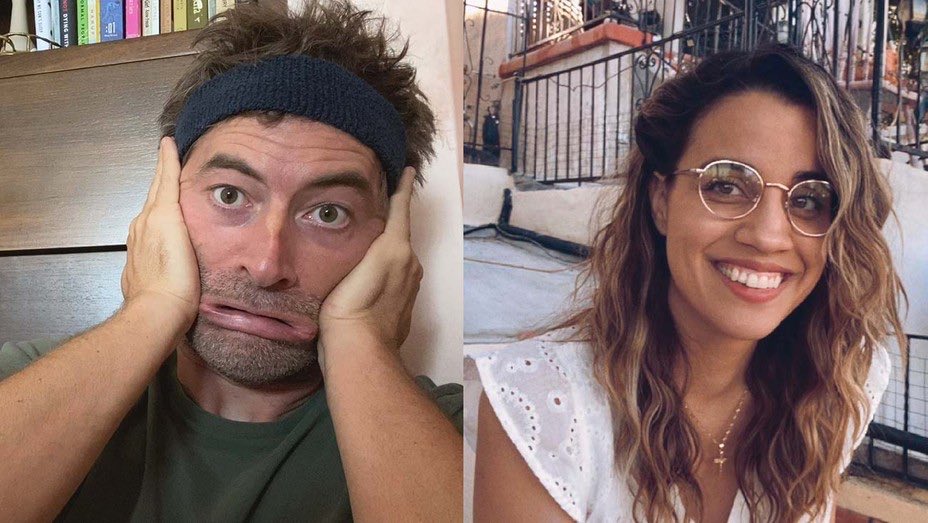
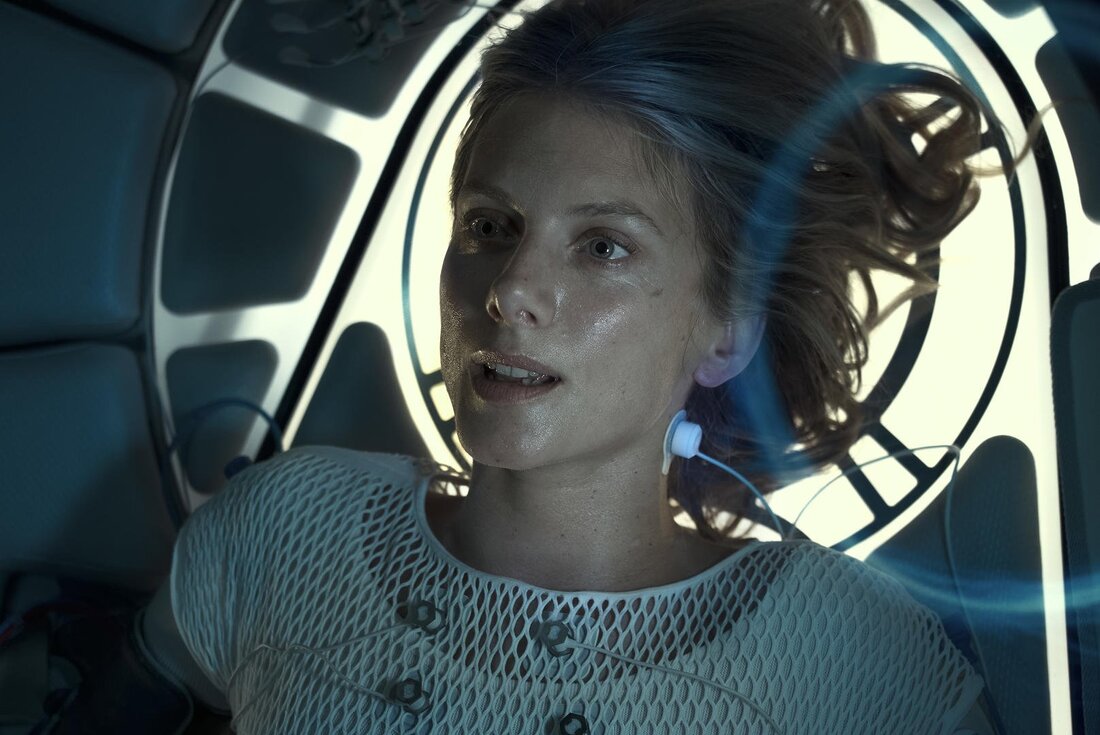
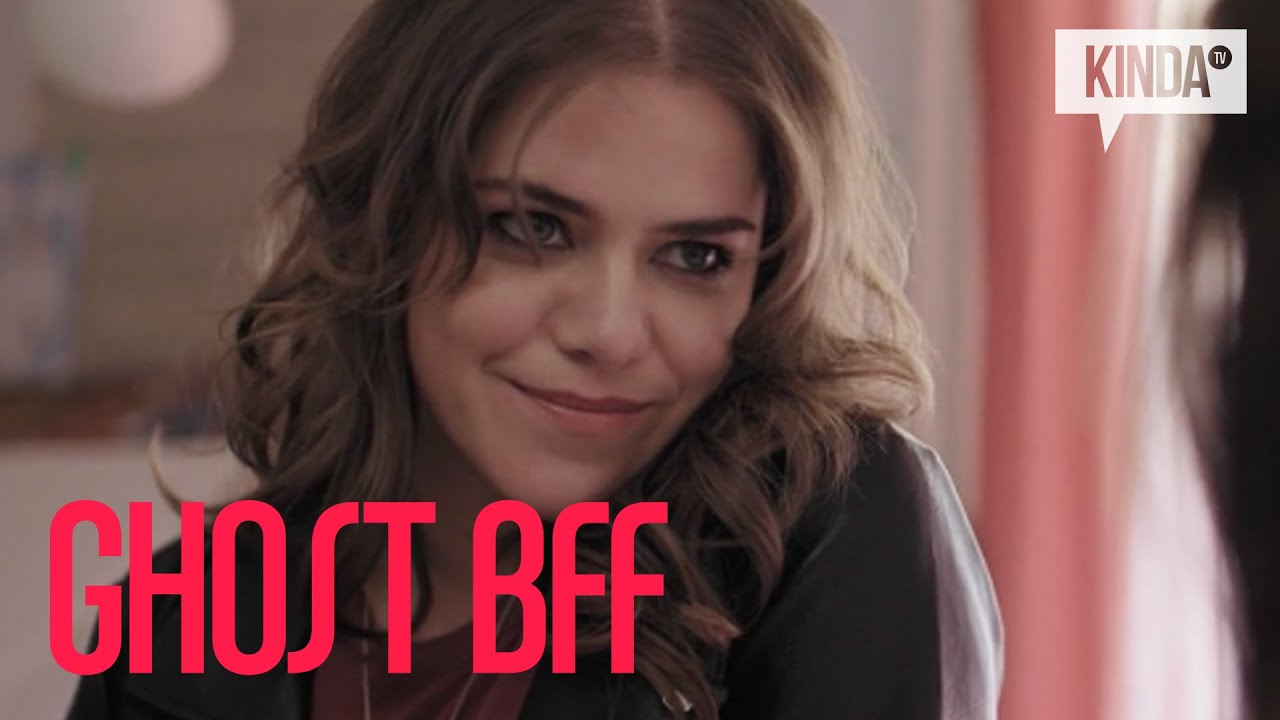
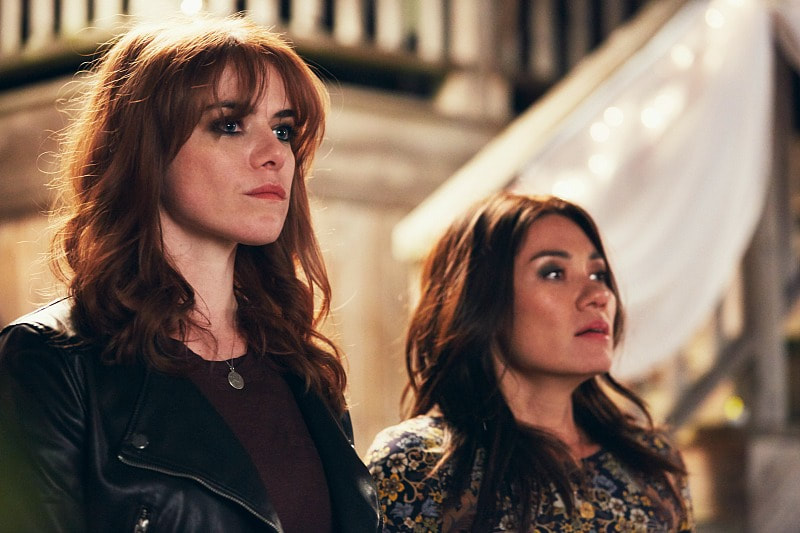
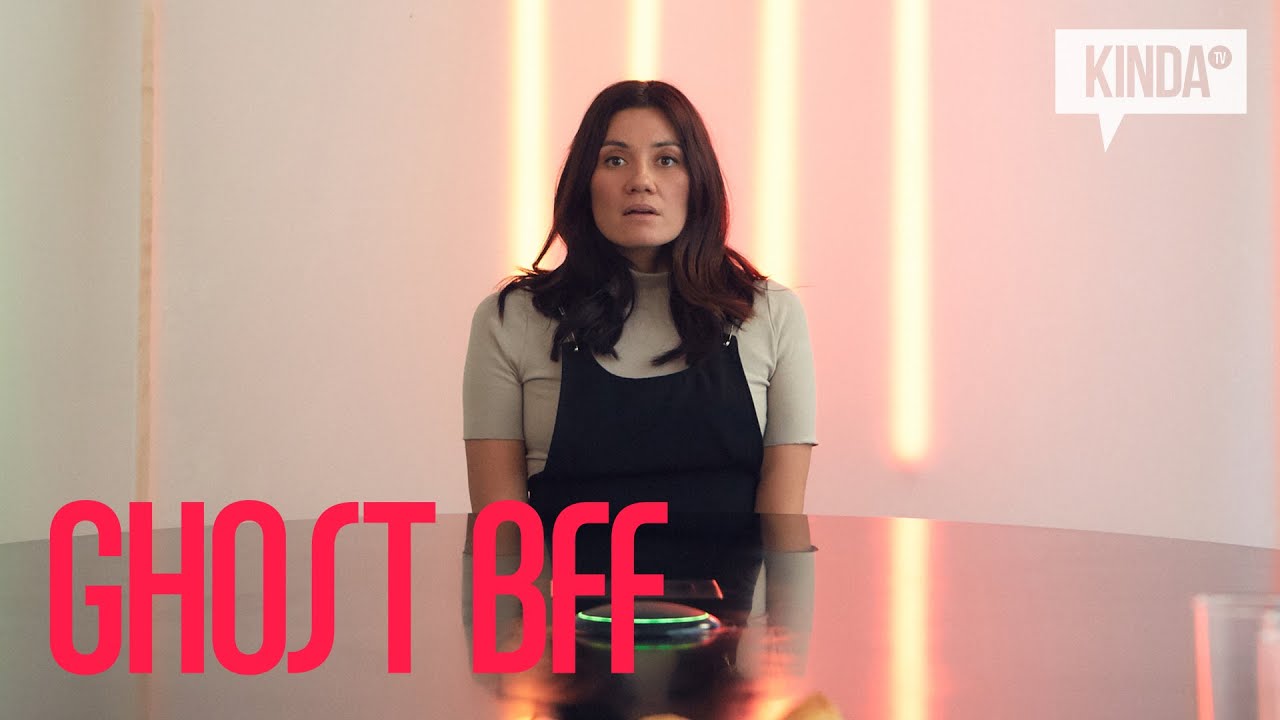
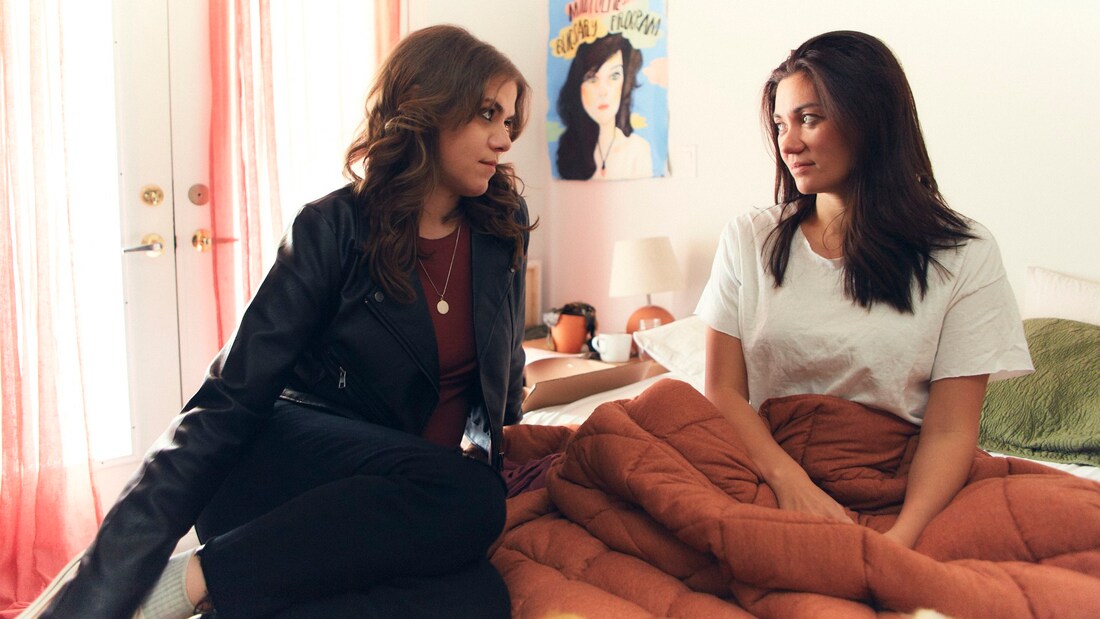
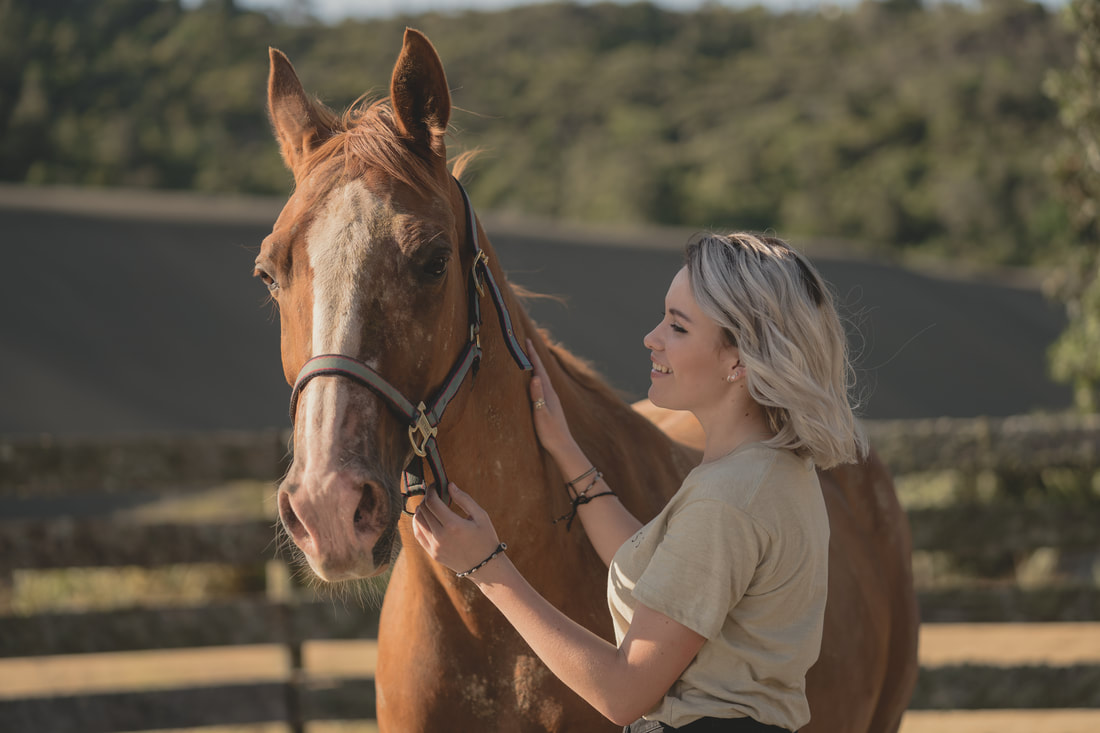
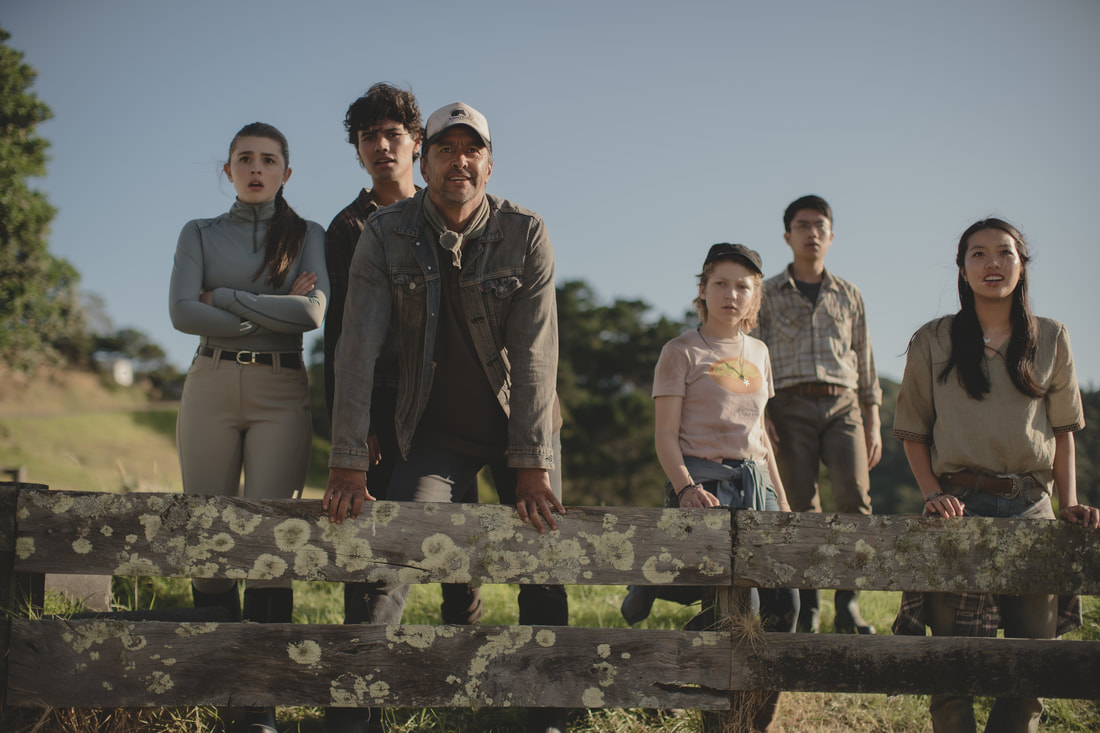
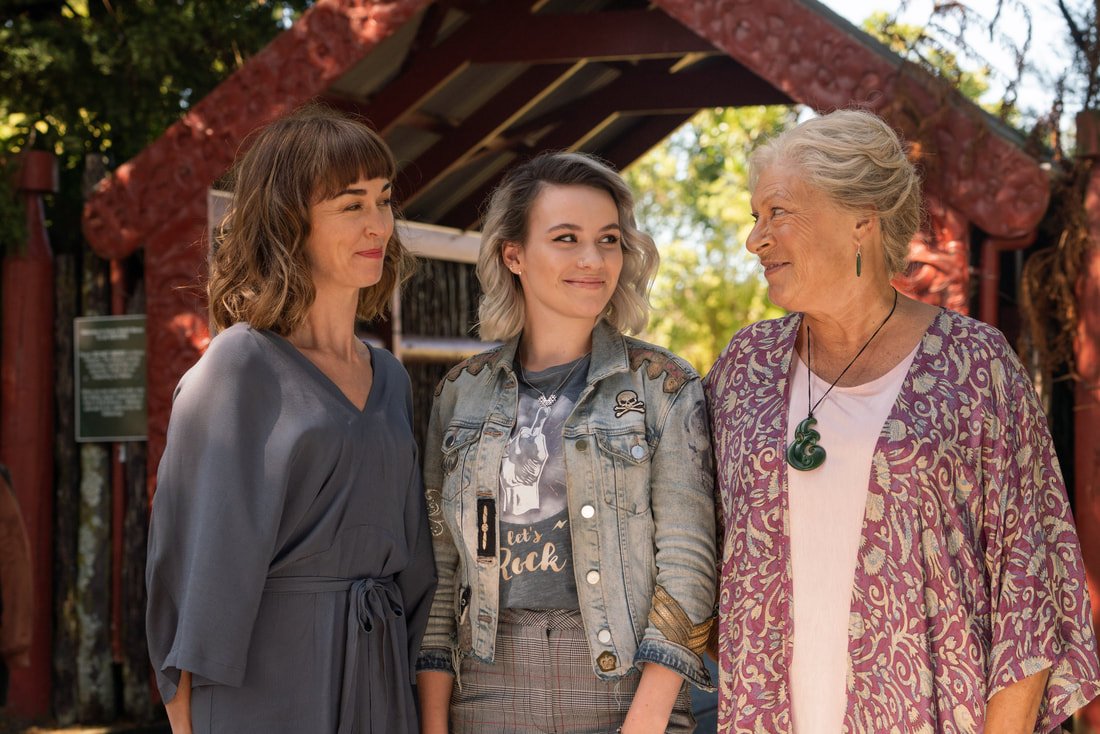
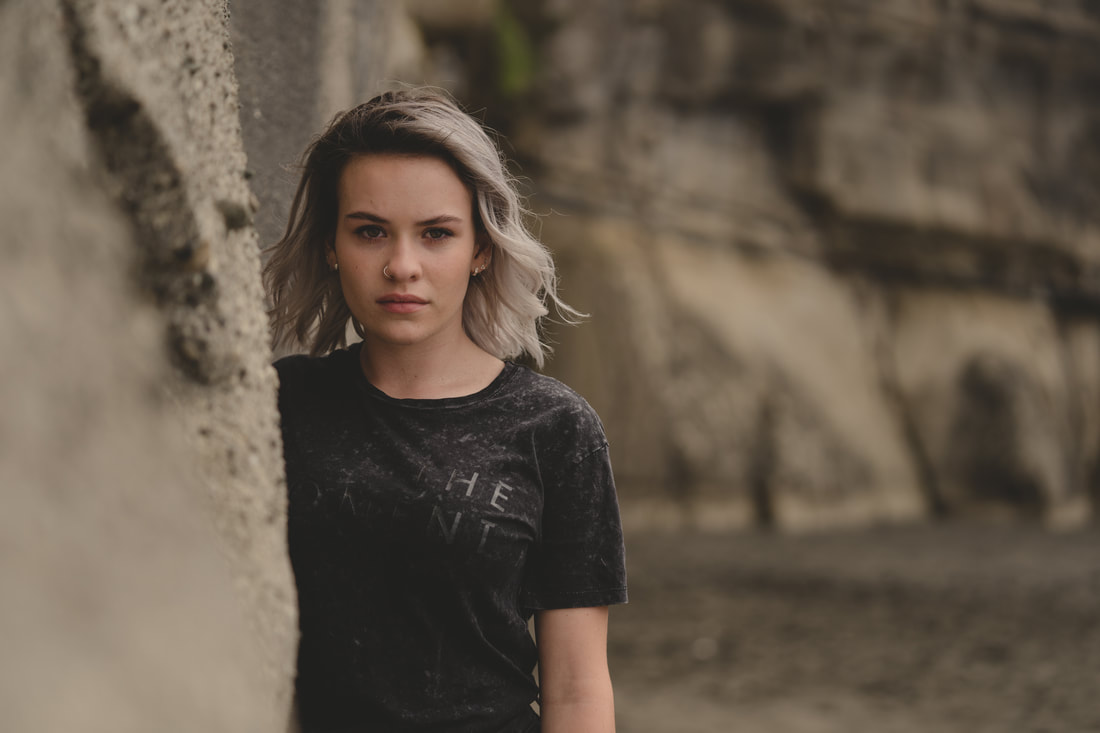
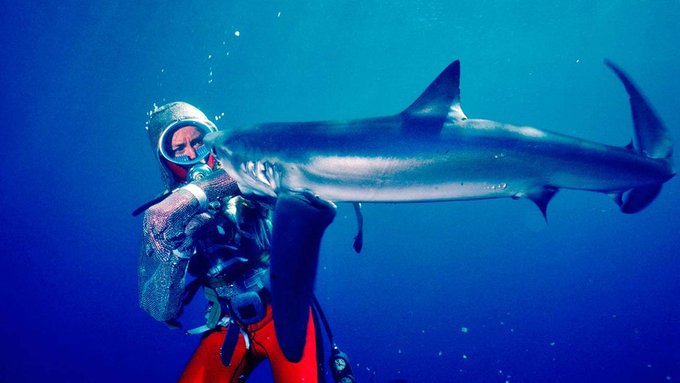
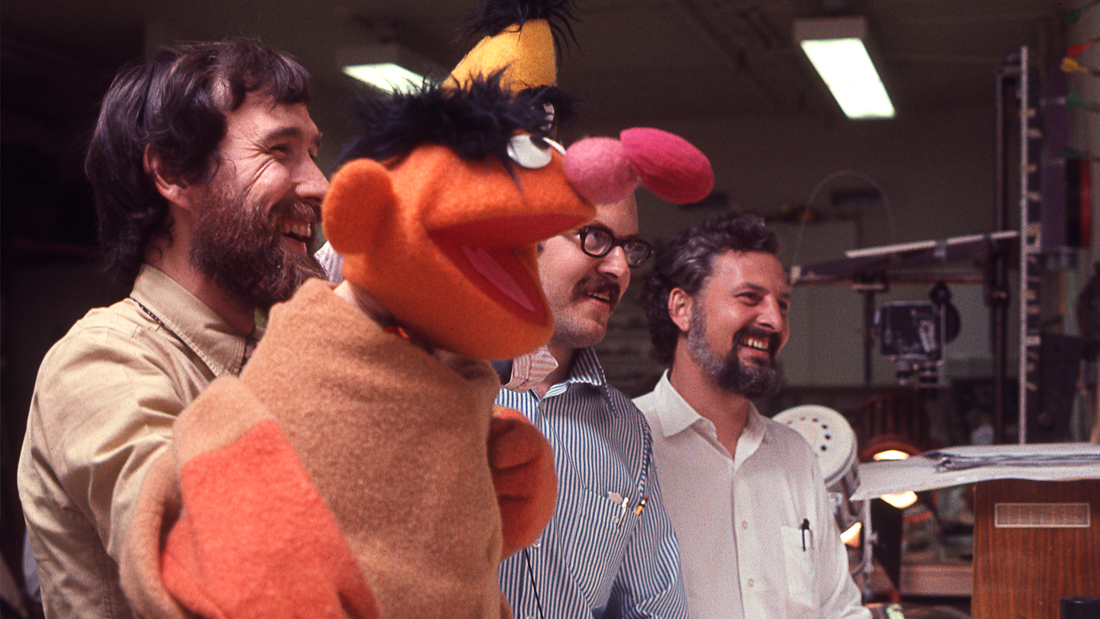
 RSS Feed
RSS Feed